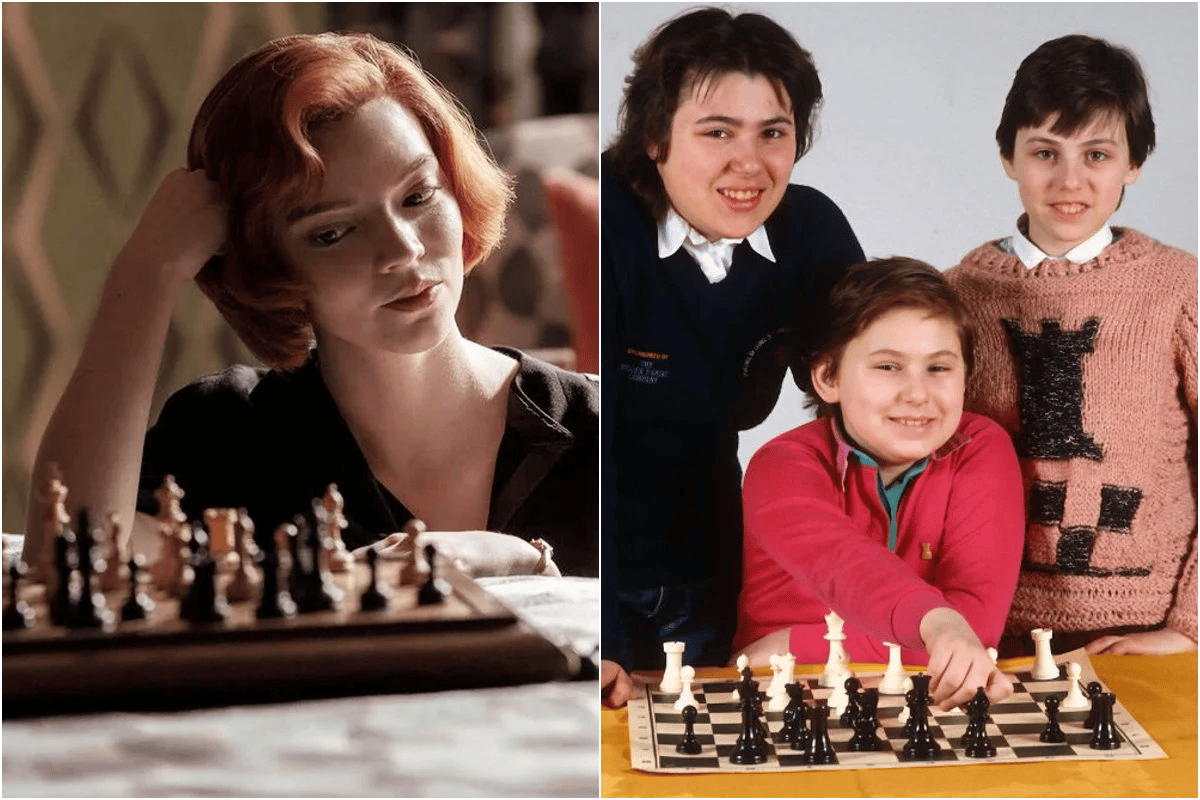
Netflix series The Queen’s Gambit is fiction. There was no gorgeous orphan chess prodigy with addiction issues who took on the male world chess champion in the 1960s.
But there are three sisters who can understand what Beth Harmon went through: Susan, Sofia and Judit Polgar. The trio burst onto the international chess scene in the 1980s, smashing the male dominance of the game when they were only in their teens. In fact, Judit was just nine when she competed in her first international tournament.
So what do the Polgar sisters think of Beth’s story in The Queen’s Gambit?
Watch the trailer for the Queen's Gambit. Post continues below.
"The sexism that she faced seems like it was a picnic compared to what I had to deal with in real life," Susan Polgar told Forward.
The Polgar sisters, who grew up in Hungary, were always destined to be chess champions. Their childhoods were one grand experiment carried out by their father Laszlo, an educational psychologist. Long before he had children of his own, Laszlo had decided that geniuses were made, not born, and he was going to prove it.
"When I looked at the life stories of geniuses, I found the same thing... they all started at a very young age and studied intensively," he said.
